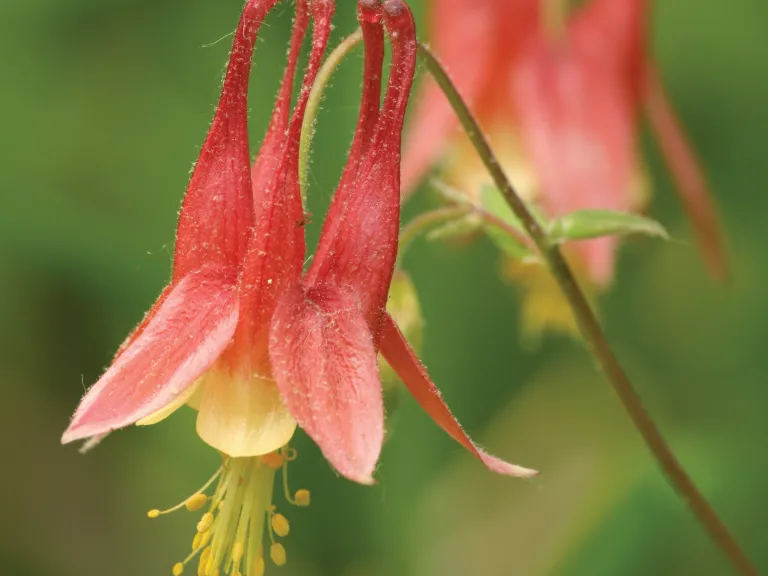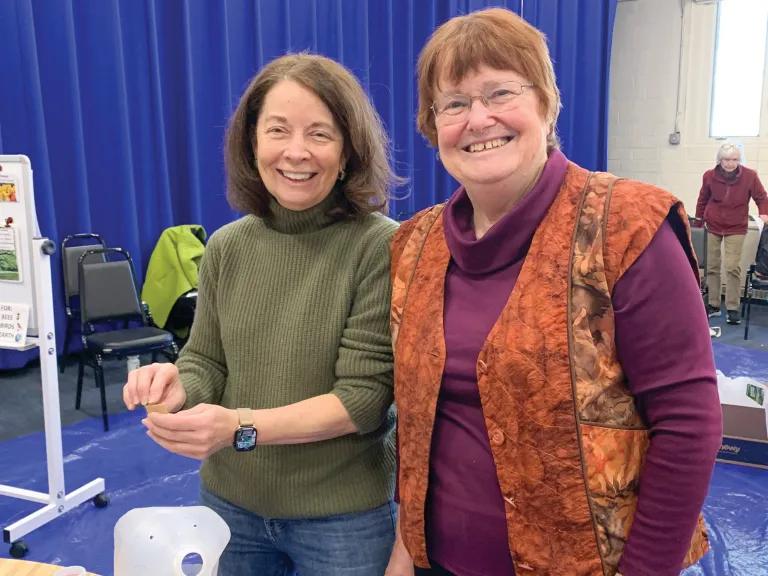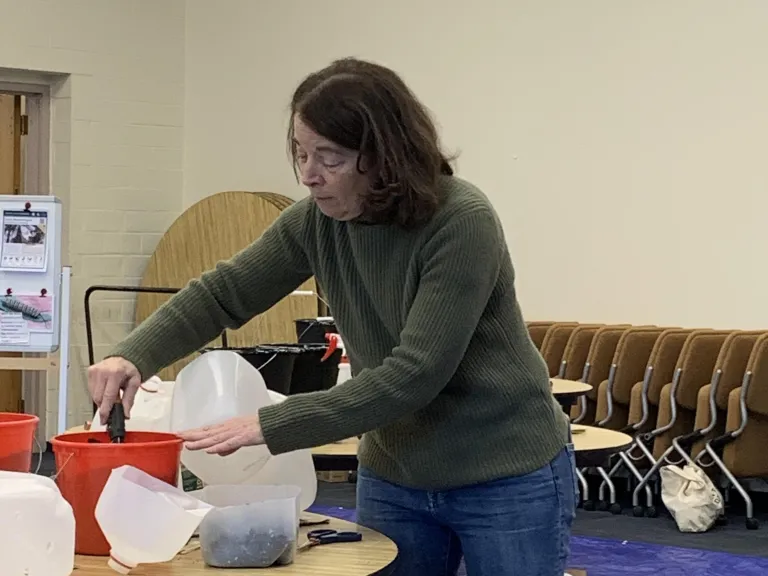Winter Sowing of Native Plant Seeds

We generally think plants need lots of warmth and sunshine to grow, but some seeds need to spend a few weeks in cold temperatures in order to germinate. Wise gardeners use the cold, snowy days of winter to get a head start on their summer plantings.
One way to start seeds is to use a winter sow technique. There are several ways to do this. SVT recently participated in a Winter Sow Workshop (see below) that demonstrated an inexpensive sowing technique that makes use of plastic milk bottles.
SVT’s Cecil Hynds-Riddle is an avid gardener who uses a variety of methods for starting seeds, and in Seed Prepping for Spring, she shares her recommendations for planting three types of native plant seeds that need some exposure to cold: wild columbine (pictured), Pennsylvania sedge, and calico aster.

Winter Sow Workshop
In January 2024, SVT cohosted a Winter Sow Workshop led by Shelley Trucksis and Jean Milburn, two gardeners from Wayland who champion the use of native plants. Not only do native plants support our native pollinators, but once they are established, they require less water than non-native ornamental plants.
During the workshop, Jean and Shelley (who is also a dedicated SVT volunteer) explained how to sow seeds in mini-greenhouses made from plastic milk jugs. For seeds that require cold stratification, the technique offers an economical way to add plants to a garden. Once the seeds are planted, the milk jugs must be placed outside, where the seeds can sprout and grow naturally in the rain and snow.

Shelley explained that the winter sow technique lets you take advantage of the freeze/thaw cycles that normally happen outside in the winter to break dormancy and cause the seeds to germinate. The milk jugs also protect the seeds and seedlings (when they sprout) from animals and sudden cold weather.
Interested in trying a winter sow?
Shelley and Jean recommend that you watch this YouTube video that introduces the steps in the process.
How late in the winter can you sow?
Shelley explained, “That is a difficult question with climate change due to the weather being so unpredictable. January has been a favorite month to do a winter sow as it normally gives you at least 60 days before the weather warms up (many of the seeds we selected have a germination time of 60 days). But you can do a winter sow from December to early March, so there is no hard rule.
"The problem is that we can no longer predict the weather and if you sow in December or January and you get a warm spell the seeds may sprout and then if you get a deep freeze which occurred last February the seedlings may die.
"But, I would say go for it as it is likely some of the seeds/seedlings will make it and it is little expense and not a lot of work."
Need some seeds?
Shelley and Jean still have packets of seeds to share and have offered them to SVT members free of charge.
If you would like a packet of seeds, please e-mail us at [email protected].
Please do not arrive at Wolbach without contacting us first.
We do not have the seeds on hand, and quantities are limited.
They created three types of packet, each of which features five different types of seeds. Seeds marked with an * are described in this pdf: Winter Sow Native Plants 2024.
For Sun or Part-Sun
- New England aster
- Hoary vervain
- Sundial lupine *
- Spotted bee balm
- Early sunflower
For Shade or Part-Shade
- Sweet goldenrod *
- Calico aster *
- Columbine
- Hairy beardtongue *
- Blue wood aster
Special Plants for Native Bumble Bees
These plants are recommended by Dr. Robert Gegear, whose research into pollination systems inspired the efforts of the Bumble Bee Project, of which SVT is a member. Our Bumble Bee Project web page has links to lists of plants recommended by Dr. Gegear.
- Great blue lobelia *
- Sundial lupine *
- Butterfly milkweed *
- Hairy beardtongue *
- White turtlehead *